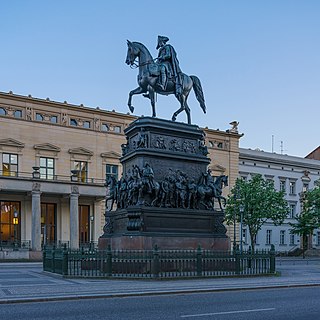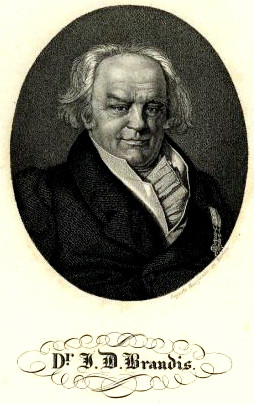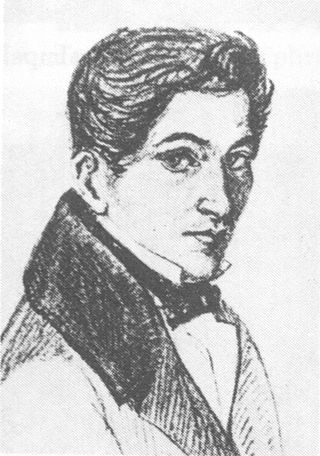Related Research Articles

Heinrich Ritter von Zeissberg was an Austrian historian.
Franz-Joseph Müller, Freiherr von Reichenstein or Franz-Joseph Müller von Reichenstein was an Austrian mineralogist and mining engineer. Müller held several positions in the Habsburg monarchy administration of mines and coinage in the Banat, Transylvania, and Tyrol. During his time in Transylvania he discovered tellurium in 1782. In his later career he became a member of the imperial council in Vienna and was knighted and elevated to the rank Freiherr in 1820.

Christian Gottfried Körner was a German jurist. His home was a literary and musical salon, and he was a friend of Friedrich Schiller.
Friedrich Karl of Limburg Stirum, was Count of Limburg Styrum and Bronckhorst, and Sovereign Lord of Gemen.

Johann Gaudenz Gubert Graf von Salis-Seewis was a Swiss poet, writer, politician and librettist.

Johann Lucas Boër, originally Johann Lucas Boogers was a German medical doctor and obstetrician.
Heinrich Friedrich Graf von Arnim-Heinrichsdorff-Werbelow was a Prussian statesman.

Dietrich Heinrich Ludwig Freiherr von Ompteda was a Hanoverian jurist and government minister.

Karl Justus Blochmann was a German educator known for being among the first to introduce the "Pestalozzi method" of education into Saxony.

The House of Sickingen is an old southwest German noble family. The lords of Sickingen belonged to the Kraichgau nobility and from 1797 to the Imperial nobility. Significant relatives emerged from the family, who achieved great influence in both spiritual and secular offices. Reinhard von Sickingen was Prince-Bishop of Worms from 1445 to 1482 and Kasimir Anton von Sickingen was Prince-Bishop of Constance from 1743 to 1750. Imperial Knight Franz von Sickingen (1481-1523) was a leader of the Rhenish and Swabian knighthood.

The equestrian statue of Frederick the Great on Unter den Linden avenue in Berlin's Mitte district commemorates King Frederick II of Prussia. Created from 1839 to 1851 by Christian Daniel Rauch, it is a masterpiece of the Berlin school of sculpture, marking the transition from neoclassicism to realism. The bronze statue shows "The Old Fritz" dressed in military uniform, ermine coat and tricorne hat on horseback above the leading generals, statesmen, artists and scientist of his time. Walled in during World War II, it was disassembled by East Germany in 1950, reassembled in Sanssouci Park in 1963, and returned to its original location in 1980.
Wilhelm August Lampadius was born in Hehlen, Braunschweig-Wolfenbüttel, on 8 August 1772 and died on 13 April 1842 in Freiberg, Kingdom of Saxony. He was a German pharmacist in Göttingen from 1785 until 1791. Also he was an "extraordinary professor" of chemistry and mineralogy in 1794 and an "ordinary professor" in 1795. He taught at the Mining Academy in Freiberg.
Lampadius is best known for inflaming the first coal gas lantern on European ground.

Most German chancellors have been followers of a Christian church. German society has been affected by a Catholic-Protestant divide since the Protestant Reformation, and the same effect is visible in this list of German chancellors. It is largely dominated by Catholics and Protestants as these remain the main confessions in the country.
Karl Heinrich August Burow was a German surgeon and ophthalmologist.

Joachim Dietrich Brandis was a German-Danish physician.

Otto Heinrich von Gemmingen zu Hornberg was a member of the aristocratic Gemmingen family. He was a diplomat and enlightenment writer, a Freemason and a friend of the composer Wolfgang Amadeus Mozart.
Gerhard Storz was the son of a Lutheran pastor from Württemberg who at various stages distinguished himself in theatre productions, as a scholar, an educationalist, a politician and an author-journalist, sometimes pursuing one career at a time and sometimes several in combination. Throughout his adult life he liked to see himself as a "language therapist". "Human speech seems to have been encoded, sealed into formulaic structures, and pressed into service for mechanistic operations", he once wrote.

Karl Müller, also Carl Müller was a German late Nazarene painter of the Düsseldorf school of painting.

Georg Friedrich Felix Eberty was a German lawyer, amateur astronomer, and writer.

Franz Philipp Joseph, Graf von Schönborn-Buchheim, was an Imperial and Royal Lieutenant Colonel, Imperial and Royal Chamberlain.
References
- ↑ "Deutsche Biographie - Sickingen, Karl Heinrich Joseph Graf von" (in German). Deutsche-biographie.de. Retrieved 2022-10-31.
- 1 2 3 4 5 "Deutsche Biographie - Sickingen, Karl Heinrich Joseph Graf von". Deutsche-biographie.de. Retrieved 2022-10-31.
- ↑ "CERL Thesaurus". Data.cerl.org. 2020-09-14. Retrieved 2022-10-31.
- ↑ "Versuche über die Platina. Mit zweien kupfer tafeln / [Karl Sickingen]".
This article needs additional or more specific categories .(October 2022) |